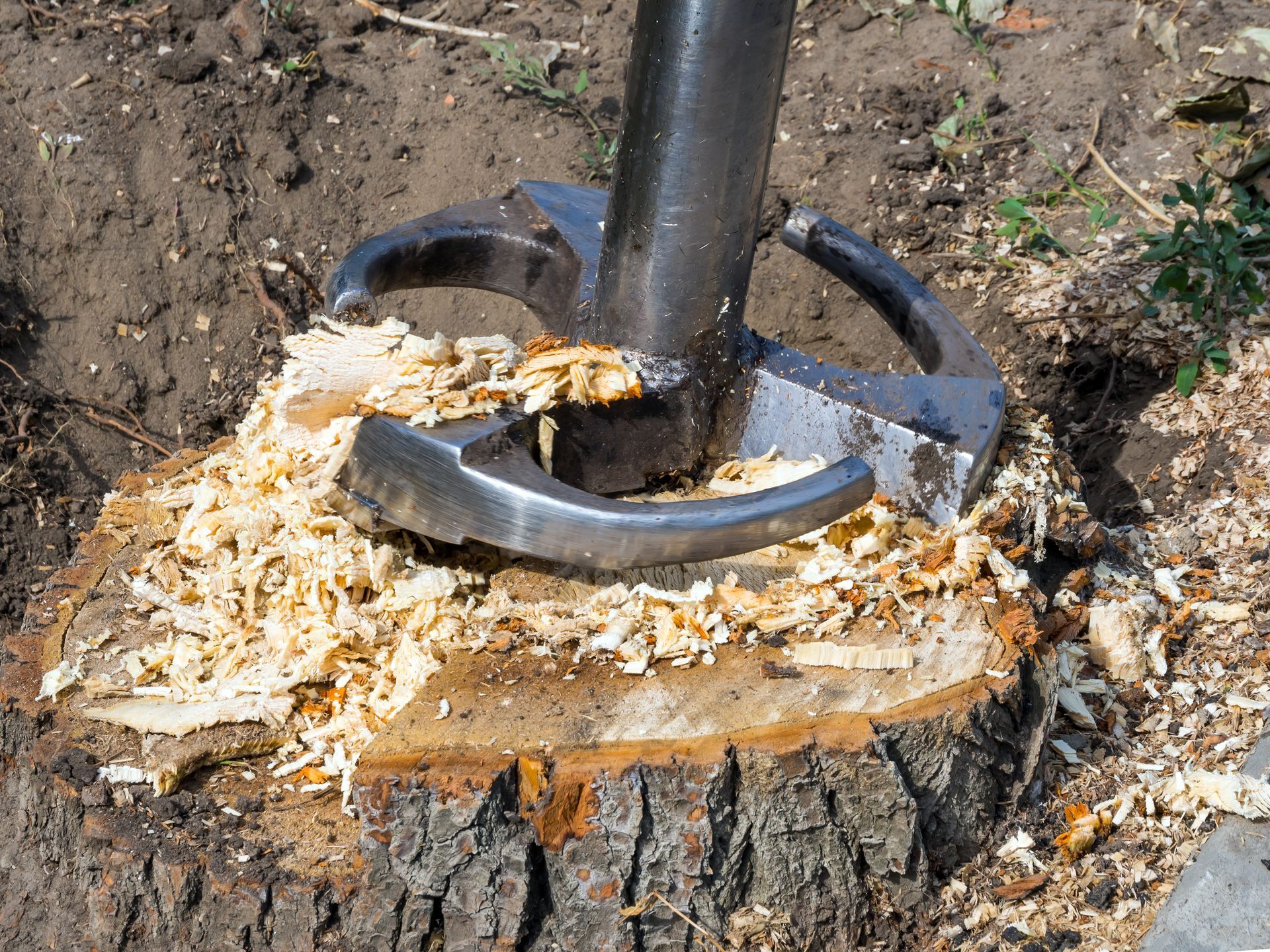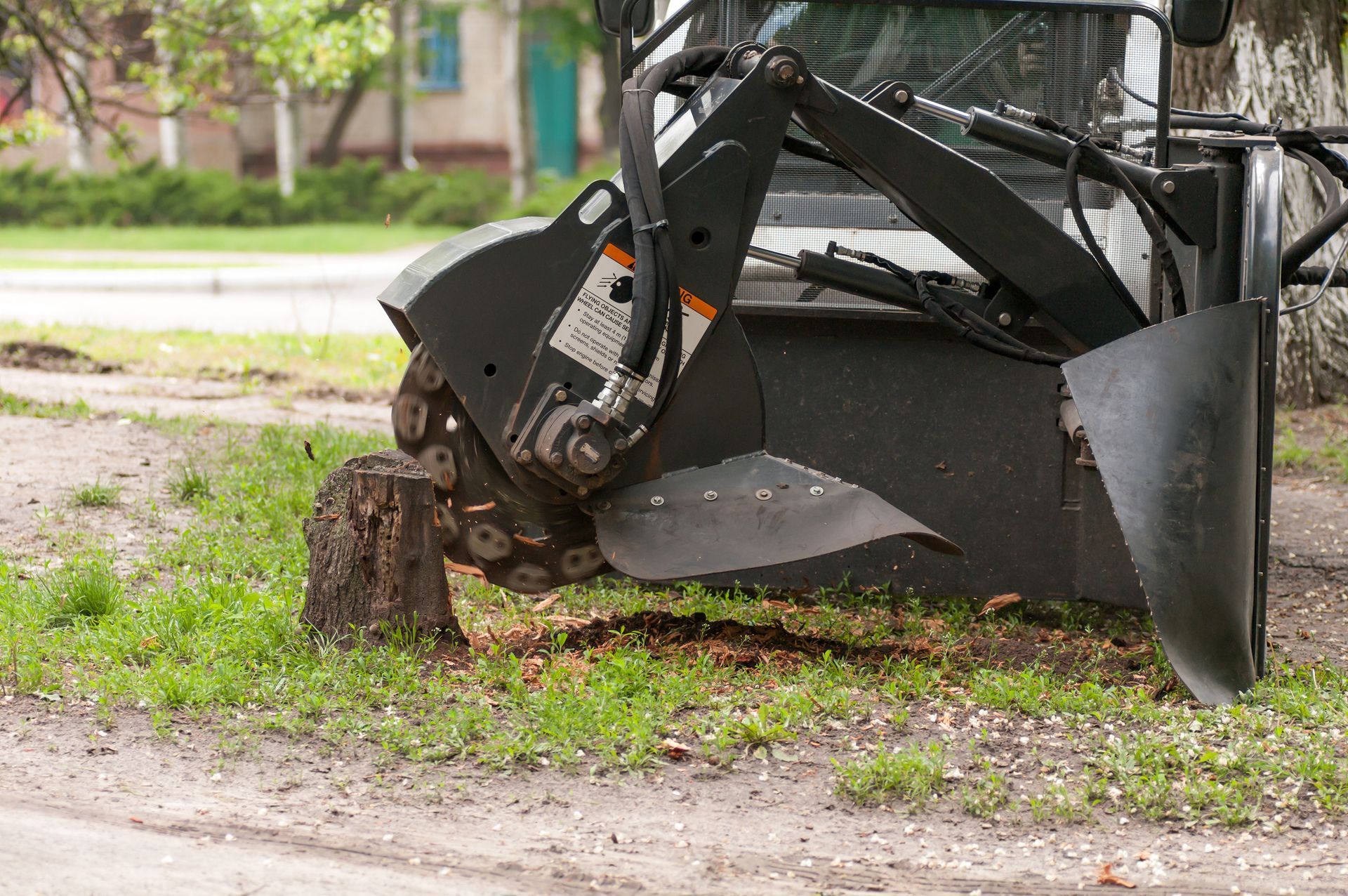Stump Removal Services
Stump Removal vs. Stump Grinding: Factors to Consider
When choosing between stump removal and stump grinding, several important factors come into play. Cost, time, environmental concerns, and post-removal site restoration are crucial considerations that can affect the decision-making process.
Analyzing Cost-Benefit Scenarios
Cost is often a primary factor in deciding between stump removal and grinding. Stump grinding in St. Cloud typically ranges from $75 to $300, depending on the size and number of stumps. In contrast, stump removal can cost $100 to $200 more due to the more labor-intensive nature of the process. While stump grinding leaves behind wood chips that can fill the hole, stump removal creates a larger void that requires additional soil backfilling. Evaluate your budget against the long-term benefits, including property aesthetics and potential obstacles in landscaping.
Understanding Timeframe and Labor
The time required for stump grinding is generally shorter than that for stump removal. Grinding can often be completed in a couple of hours, while stump removal may take several hours to a full day. Labor involvement also differs significantly; stump removal usually demands more manual work, as digging out roots is necessary. A quicker grinding process means less disruption in your yard, which may be a key benefit if you have ongoing projects.
Environmental Impact and Sustainability
Environmental considerations play a crucial role in decision-making. Stump grinding is often seen as a more sustainable option for the St. Cloud area since it leaves root systems in place, allowing them to decompose naturally. This helps maintain soil nutrients and can benefit surrounding trees and plants. Conversely, removing a stump requires digging out roots, which can disturb the soil ecosystem and impact nearby vegetation. Understanding these environmental effects can help determine the best approach for your landscape.
Post-Removal Restoration Options
After the stump is addressed, restoration is key for integrating the area into your landscape. With stump grinding, the left-behind wood chips can be spread as mulch, helping retain moisture and suppress weeds. In contrast, stump removal typically leaves a larger hole that needs to be filled with soil. This may involve reseeding or laying sod to restore the aesthetics of your yard. Consider how each method impacts future landscaping plans and the maintenance needed for the area post-removal.
Get a free quote
Contact Us
We will get back to you as soon as possible.
Please try again later.
Numerous Benefits of Stump Removal
Removing a tree stump can bring various benefits but also comes with some trade-offs. Understanding these reasons can aid in making an informed decision about whether to proceed with stump removal.
Enhancing Aesthetic Appeal
One of the most compelling reasons to remove a stump is to improve the visual appeal of your landscape. A large, unsightly stump can detract from the beauty of your garden or yard. Removing it opens up opportunities for landscaping improvements, such as planting flowers, shrubs, or new trees in that space. This can create a more cohesive and inviting outdoor environment. Additionally, removing stumps allows for better lawn maintenance, making it easier to mow and care for the area.
Preventing Pest Infestations
Stumps are often breeding grounds for various pests. Insects like termites and beetles can use decomposing wood as a habitat, which may lead to infestations that can spread to nearby trees and structures, which can be common during the summer in St. Cloud. Removing the stump eliminates this risk, thereby protecting surrounding plants and your home. It is a proactive measure for controlling pests, reducing the likelihood of damage from wood-boring insects. Furthermore, decaying stumps can also attract animals such as rodents, which can create additional problems in your yard.
Addressing Safety Hazards
A tree stump can pose a safety risk in outdoor spaces. Stubs that protrude from the ground can trip unsuspecting individuals, particularly children and elderly guests. Removing the stump can significantly improve safety, allowing for unobstructed walkways and recreational areas. Additionally, a stump can become a hazard during lawn care activities. Mowers and string trimmers may be damaged if they strike hidden stumps, leading to costly repairs.
Potential Impact on Local Ecology
While there are benefits to stump removal, it's essential to consider its ecological impact. Removing a stump can disrupt the local ecosystem of St. Cloud, as decaying wood provides habitat for various organisms, including fungi, insects, and small animals. If the stump is large, its removal could affect soil quality and the immediate environment, temporarily altering conditions for surrounding plants. It’s worth assessing if the ecological benefits of leaving the stump in place outweigh the aesthetic and safety advantages of removal.
Considerations for Landscape Planning
When planning your landscape, the stump's location can greatly influence design. If you aim to create specific garden themes or layouts, removing the stump may be crucial for achieving your vision. However, also consider the potential costs and disruptiveness of stump removal, which can involve significant labor and machinery. It’s advisable to evaluate your long-term landscaping goals to determine if a stump fits into your design or if removal aligns better with your plans overall.
Emergency Tree Removal?
We're Just a Call Away - Contact Us 24/7!
Common Mistakes to Avoid When Removing Tree Stumps in St. Cloud, MN
Common Mistakes to Avoid When Removing Tree Stumps in St. Cloud, MN
Stump removal can be an intricate process, and several mistakes can lead to complications. Addressing safety measures, understanding local laws, and selecting appropriate methods are crucial for a successful outcome. Below are common mistakes to be mindful of during stump removal.
Overlooking Safety Precautions
Safety should always be the first consideration in stump removal. Wearing appropriate personal protective equipment (PPE) is essential. This includes gloves, goggles, steel-toed boots, and hearing protection if using noisy machinery. Operators should also be aware of their surroundings. Ensuring that no one is near the work area can prevent accidents. Using tools and equipment correctly is vital; for instance, a chainsaw should be handled with care to avoid kickback injuries. Creating a safe working environment can mitigate risks significantly. Check for hazards like uneven ground or overhanging branches that can pose dangers during the removal process.
Ignoring Local Regulations and Permits
Before commencing any stump removal project, it’s important to research local regulations and permit requirements. Many municipalities have specific rules governing tree removal and stump disposal. Failing to obtain the necessary permits can result in fines, and in some cases, you may be required to replant trees. Local guidelines often dictate how much of the stump can be removed and whether the entire system must be excavated. Consulting with local authorities representing the city of St. Cloud or checking municipal websites can save time and avoid legal complications. Always ensure compliance to keep the project lawful and efficient.
Choosing Incorrect Removal Methods
Not all stump removal methods are suitable for every situation. Common techniques include grinding and excavation, but the choice largely depends on the stump’s size and location. For instance, a small stump may be easily ground down, while a larger one may require complete excavation involving heavy machinery. Skipping this evaluation can result in ineffective removal and additional labor costs. Using the wrong equipment can also lead to damage to surrounding areas. Assessing removal methods carefully can prevent unnecessary complications throughout the project.
Neglecting Underground Utilities
Before removing a stump, it's crucial to check for underground utilities. Failing to do so can result in service interruptions or injuries. Underground lines for electricity, gas, and water are common issues that can arise during stump removal. Most areas have services like “call before you dig” that can mark utility lines. This helps in avoiding hazards and preventing damage. Neglecting this step could lead to costly repairs and delays in your project. Always take the time to verify utility locations as part of your planning process. It’s a small step that can save significant trouble down the road.
Overusing Chemicals for Stump Removal
Chemical methods, like potassium nitrate, can expedite stump decomposition but should be used with caution. Overusing chemicals may pose environmental risks. Excessive application can contaminate the surrounding soil and affect nearby vegetation. It’s essential to follow the manufacturer’s instructions accurately when applying any chemical solutions. Drilling holes into the stump and adding the chemical precisely, as directed, ensures effectiveness without causing harm to the environment. Using chemicals should be just one part of a comprehensive removal strategy. Pairing it with other removal methods can yield better results while minimizing environmental impact on the St. Cloud area.
Professional Care. Affordable Service.
Location
Call
Location
Call
All Rights Reserved | St. Cloud Tree Service | Powered by Snapps



